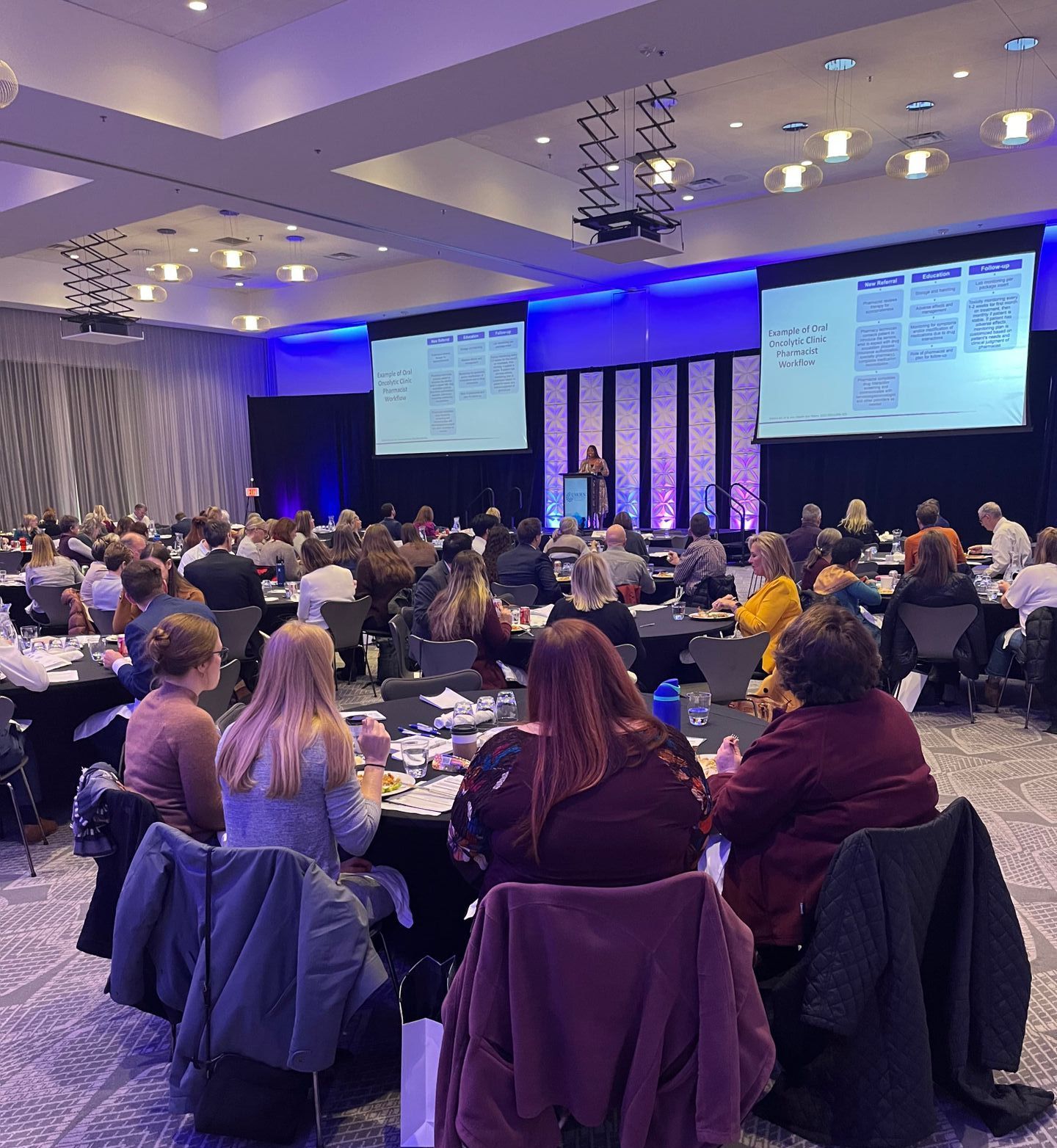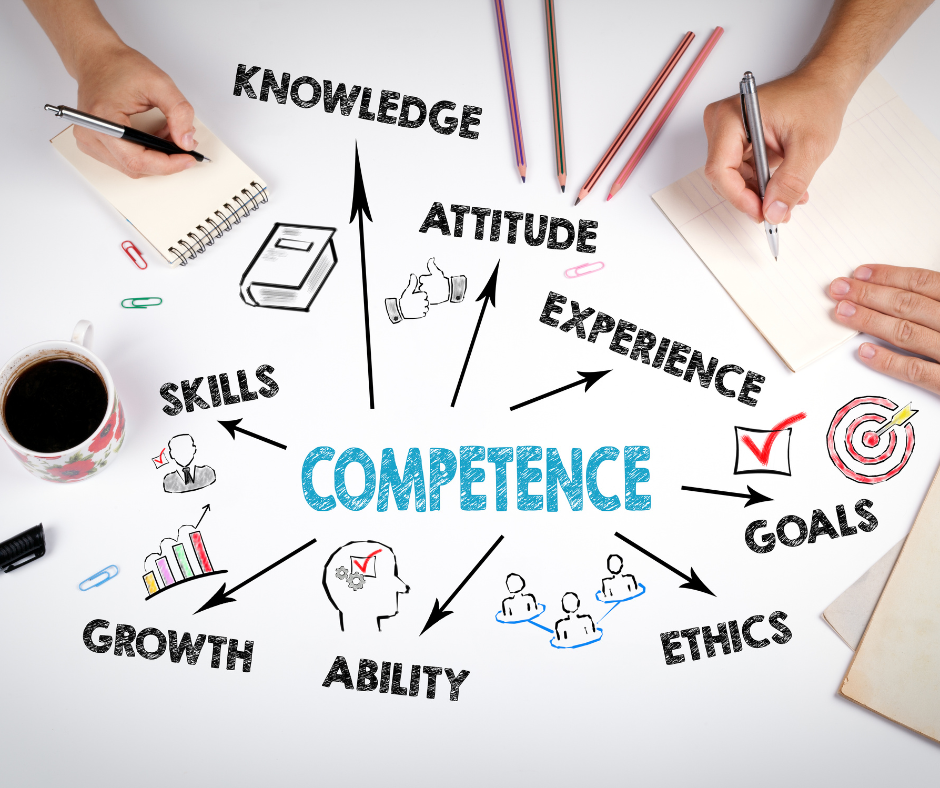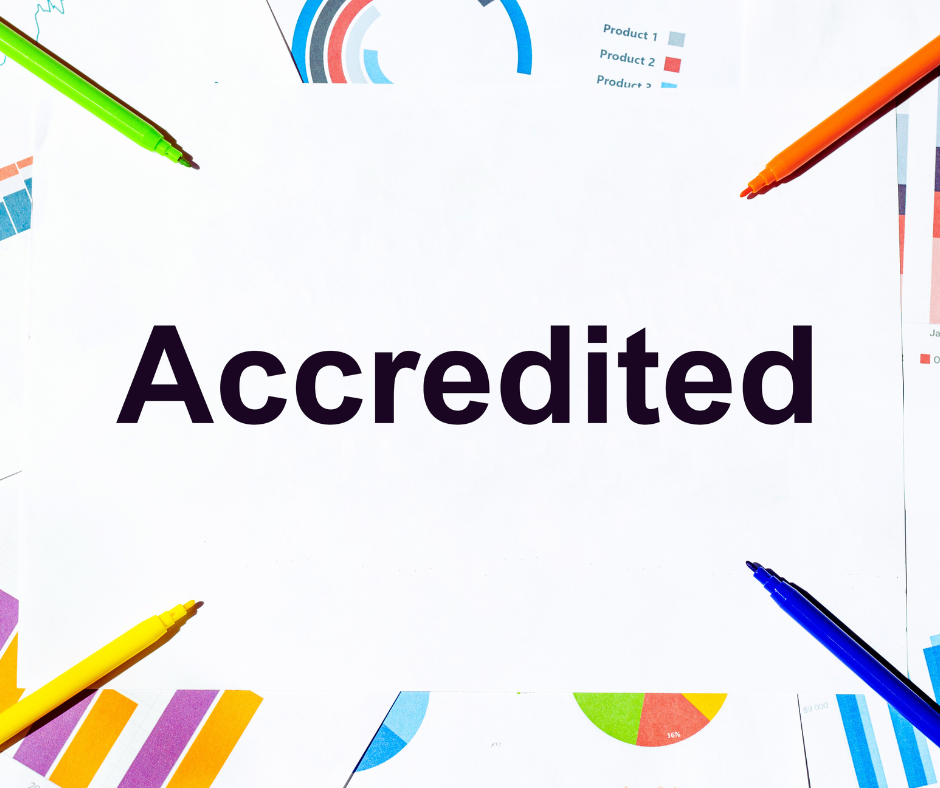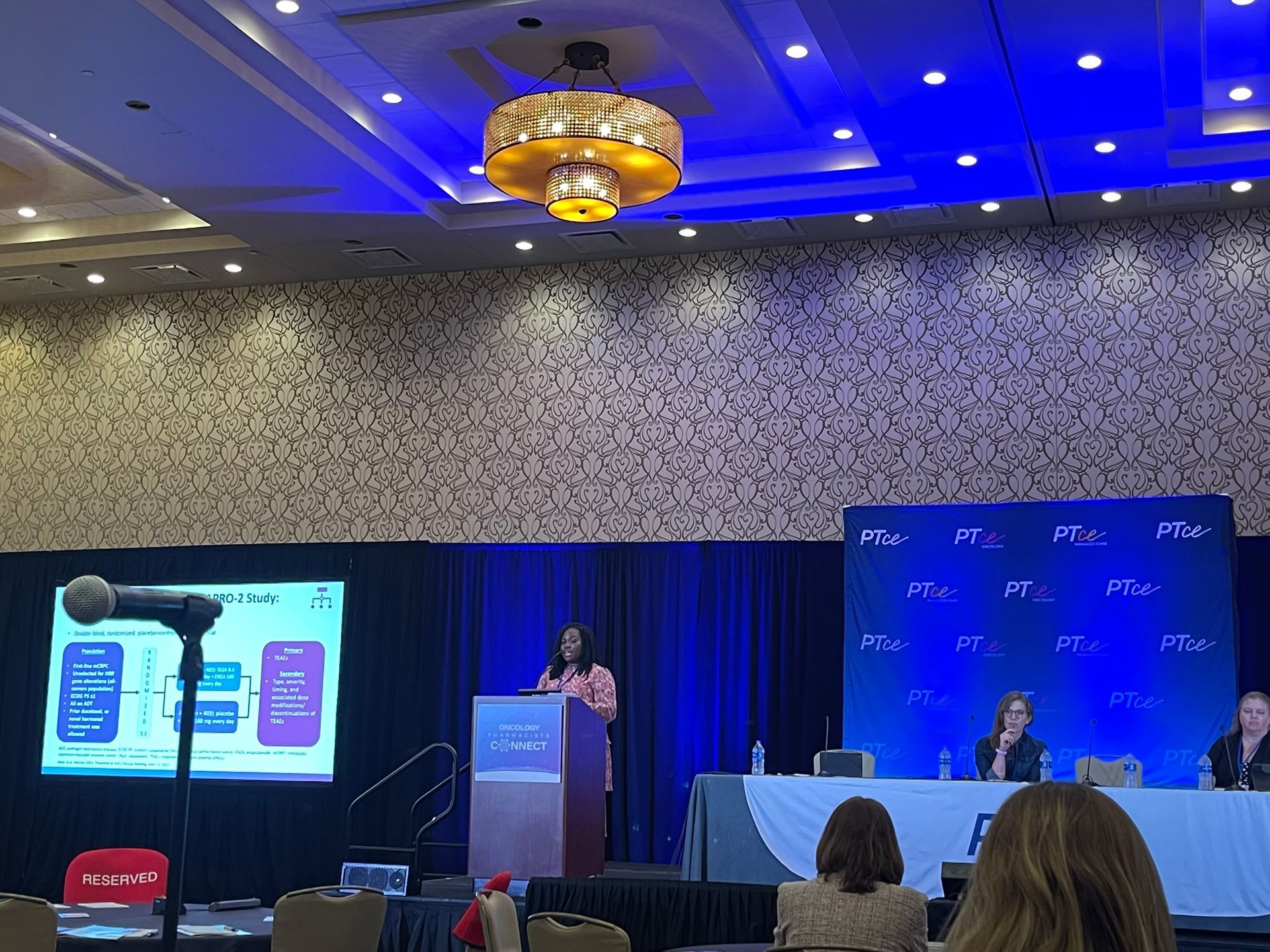Creating CPE Programs That Meet the Needs of Modern Pharmacists
Creating CPE Programs That Meet the Needs of Modern Pharmacists

Understanding The Evolving Roles Of Modern Pharmacists
Understanding the evolving roles of modern pharmacists is crucial for creating Continuing Pharmacy Education (CPE) programs that are relevant and effective. Traditionally seen as dispensers of medication, today's pharmacists are increasingly taking on more dynamic, patient-centered roles within healthcare systems. They are now integral members of the healthcare team, involved in medication therapy management, chronic disease management, and preventive care services.
This shift has been driven by the need for more personalized healthcare, the increasing complexity of medication regimens, and the expansion of pharmacists' scope of practice in many regions.
Modern pharmacists are expected to possess a blend of clinical skills, technological proficiency, and patient communication abilities. They are tasked with navigating electronic health records, assessing and optimizing medication regimens, and counseling patients to ensure adherence and improve health outcomes. Moreover, they are at the forefront of addressing public health challenges, such as participating in vaccination efforts and educating the community on health issues like opioid abuse and chronic disease management.
This expanded scope requires pharmacists to stay abreast of the latest clinical guidelines, technological advancements, and regulatory changes.
Pharmacists' evolving roles also emphasize the importance of interprofessional collaboration, as they work alongside physicians, nurses, and other healthcare providers to deliver comprehensive care. As the landscape of healthcare continues to change, CPE programs must adapt by incorporating innovative learning methods and content that cater to these expanding roles. By understanding these shifts, CPE providers can equip pharmacists with the necessary skills and knowledge to meet the demands of modern healthcare effectively.
Identifying Key Competencies Required In Contemporary Pharmacy Practice
In contemporary pharmacy practice, the landscape is rapidly evolving due to advances in medicine, changes in healthcare regulations, and the increasing complexity of patient needs. As such, Continuing Pharmacy Education (CPE) programs must be designed to equip pharmacists with the competencies required to navigate these changes effectively. Understanding these key competencies is crucial for developing educational programs that not only keep pharmacists informed but also enhance their ability to provide high-quality care.
One of the primary competencies needed is clinical knowledge. Pharmacists must maintain a robust understanding of pharmacotherapy, patient assessment, and disease management. This involves staying informed about new drugs, treatment guidelines, and emerging health issues. Effective communication skills are equally vital. Pharmacists frequently interact with both healthcare professionals and patients; hence, they must be adept at conveying complex information clearly and empathetically.
This also reinforces the importance of cultural competence, as pharmacists serve diverse populations and need to address various cultural beliefs and practices respectfully.
Additionally, the ability to integrate technology into practice has become increasingly important. Pharmacists are now expected to use electronic health records efficiently, manage telehealth consultations, and utilize various digital tools to support medication management and patient monitoring. Leadership and management skills are also crucial, especially for those in supervisory or independent practice roles, where team coordination and strategic decision-making are necessary.
Lastly, a commitment to lifelong learning and adaptability is essential, enabling pharmacists to continually refine their skills and adapt to the evolving demands of healthcare. By aligning CPE programs with these competencies, the profession can ensure that pharmacists remain at the forefront of patient care and public health.
Designing Interactive And Engaging CPE Curriculum
Designing interactive and engaging Continuing Pharmacy Education (CPE) curriculum for modern pharmacists involves a strategic approach that incorporates innovative teaching methodologies and leverages technological advancements to enhance learning outcomes. Pharmacists must stay current with emerging trends, new medications, and evolving patient care protocols. To accommodate this need, CPE programs should be crafted to offer more than just traditional lecture-style delivery by integrating interactive elements that stimulate active learning and critical thinking.
An effective CPE curriculum should incorporate a variety of teaching modalities, including case-based learning, simulations, and problem-based exercises that mirror real-world scenarios. This allows pharmacists to apply theoretical knowledge in practical settings, fostering decision-making skills that are crucial in patient care. Utilizing virtual reality (VR) and augmented reality (AR) can further enhance the learning experience by providing immersive environments where pharmacists can practice clinical skills in a safe, controlled setting.
Technology also plays a pivotal role in facilitating engagement and interaction. Online platforms can offer webinars, interactive discussions, and collaborative projects, enabling pharmacists to connect with peers and instructors from different geographies, thus enriching the learning process with diverse perspectives. Additionally, gamification of educational content can be employed to boost motivation and participation, making learning both effective and enjoyable.
To ensure the curriculum remains relevant, it is vital to incorporate feedback mechanisms that allow participants to provide input on course content and delivery. Regularly updating course materials to reflect the latest industry developments and incorporating evidence-based practices ensures that CPE programs meet the evolving needs of modern pharmacists. By fostering a dynamic and engaging educational environment, CPE programs can effectively prepare pharmacists to meet the challenges of contemporary practice.
Integrating Technology And Online Learning Platforms In CPE
It is imperative that continuing pharmacy education (CPE) programs integrate technology and online learning platforms to effectively meet the needs of modern pharmacists. As technology continues to play a pivotal role in healthcare delivery, pharmacists must be equipped with the skills and knowledge to leverage digital tools effectively. Online learning platforms provide a flexible and accessible format for CPE, allowing pharmacists to engage with educational content at their own pace and convenience.
This flexibility is critical, given the demanding schedules and diverse professional responsibilities pharmacists face. Integrating technology into CPE also allows for a more interactive and engaging learning experience. Simulations, virtual reality, and augmented reality can be utilized to create realistic scenarios that enhance clinical decision-making and problem-solving skills. Such immersive experiences not only increase engagement but also enhance the retention of knowledge and the application of new skills in practice.
Moreover, technology facilitates personalized learning experiences. Adaptive learning platforms can assess individual learning styles and progress, tailoring content and resources to meet specific needs. This customization helps pharmacists to focus on areas where they require the most development, thereby enhancing their competence and confidence in practice.
The use of data analytics in online learning environments provides valuable insights into learning outcomes and areas for improvement, enabling continuous refinement of CPE programs. By leveraging technology in CPE, programs can support pharmacists in navigating the complexities of modern healthcare, ultimately leading to improved patient care and health outcomes. As the role of pharmacists continues to expand, integrating technology into CPE will be crucial in preparing pharmacy professionals for the challenges and opportunities that lie ahead.
Customizing CPE Programs To Address Diverse Learning Styles
Continuing Pharmacy Education (CPE) programs must be designed to accommodate the diverse learning styles of modern pharmacists. Tailoring educational experiences to meet the specific preferences and needs of learners enhances engagement, retention, and the practical application of knowledge. Pharmacists, much like other professionals, possess varied learning preferences: some thrive in visual and auditory learning environments, while others benefit from kinesthetic or experiential learning opportunities.
Customizing CPE programs begins with understanding these differences through assessment tools and feedback mechanisms. By gathering data on learners’ preferred styles, educators can design programs that offer multiple pathways to learning. For instance, visual learners might benefit from interactive infographics and video content, while auditory learners could engage with podcasts or recorded lectures. Hands-on workshops and simulations provide kinesthetic learners with the opportunity to actively engage with the material, leading to better retention and understanding.
Additionally, incorporating technology can significantly enhance the customization of CPE programs. Online platforms offer adaptive learning technologies that adjust content based on real-time feedback, ensuring that all participants can engage with the material at their own pace. These platforms can also facilitate a blend of synchronous and asynchronous learning, catering to pharmacists' varying schedules and commitments.
Cultivating an inclusive learning environment also involves creating opportunities for peer-to-peer interaction and collaboration, allowing pharmacists to learn from each other’s experiences and insights. By embracing and implementing strategies that account for diverse learning styles, CPE programs can more effectively equip pharmacists with the skills and knowledge necessary to navigate the complexities of modern healthcare environments.
Assessing And Incorporating Feedback From Pharmacist Participants
In the development of Continuing Pharmacy Education (CPE) programs tailored for modern pharmacists, assessing and incorporating feedback from participants is an essential component. Feedback serves as a critical tool for understanding the needs, preferences, and expectations of pharmacists, thereby guiding educators in refining their programs to ensure relevance and efficacy. Gathering feedback can occur through various methods, such as surveys, interviews, and focus groups, administered immediately after educational sessions or at regular intervals throughout the program.
This feedback should be designed to elicit detailed responses about specific elements of the program, including content relevance, the applicability of the knowledge gained, instructional methods, and perceived improvements in professional practice.
Analyzing the feedback requires a systematic approach to identify recurring themes or concerns that might necessitate program modification. It is important to strike a balance between quantitative metrics, such as satisfaction scores, and qualitative insights that provide deeper understanding of pharmacists' experiences. By maintaining an open channel of communication, educators can not only receive but also respond effectively to feedback, demonstrating a commitment to continuous improvement and participant-centered learning.
Incorporating feedback into CPE program design involves adjusting curricula to include emerging topics in pharmacy practice, integrating diverse teaching methods that cater to different learning styles, and enhancing interactive components to foster engagement. Moreover, it supports the cultivation of a learning environment that values innovation and adaptability in addressing the evolving challenges faced by pharmacists. Ultimately, a feedback-informed approach ensures that CPE programs remain dynamic and closely aligned with the current and future needs of pharmacists, empowering them to deliver high-quality patient care.
Evaluating The Impact And Success Of CPE Programs On Pharmacy Practice
Evaluating the impact and success of Continuing Pharmacy Education (CPE) programs on pharmacy practice involves assessing various dimensions that contribute to the professional development of pharmacists. Modern CPE programs are designed to not only expand the knowledge base but also enhance the practical skills that pharmacists need to meet the evolving demands of patient care. One of the primary indicators of the success of CPE programs is the improvement in clinical competencies and the ability of pharmacists to apply new learning to real-world scenarios.
This can be assessed through pre- and post-program evaluations, measuring changes in knowledge, skills, and behaviors.
Another critical factor is the extent to which CPE programs are aligned with the current healthcare landscape. Programs that incorporate contemporary issues, such as advancements in pharmacotherapy, patient safety, and the use of technology in healthcare, tend to be more successful. Feedback from participants is invaluable in this evaluation process, as it provides insight into how relevant and applicable the program content is to everyday practice.
Moreover, the impact on patient outcomes can serve as a significant measure of success. When pharmacists apply newfound skills effectively, there should be a noticeable enhancement in patient care processes and health outcomes.
Success can also be evaluated in terms of professional growth opportunities offered through the program, including increased confidence, improved communication skills, and the ability to meet professional accreditation requirements. Additionally, fostering a culture of continuous improvement and lifelong learning among pharmacists is a key goal of CPE programs. Ultimately, the success of these programs hinges on their ability to adapt and respond to the dynamic nature of the healthcare environment, ensuring that pharmacists are equipped to meet the needs of their patients effectively and efficiently.
Stay ahead of the curve by designing CPE programs that cater to the needs of modern pharmacists. Equip your learners with relevant skills and knowledge to thrive in today’s healthcare landscape.
📩
Contact us today to get expert guidance in creating impactful CPE programs!
🔗 Visit
Community RSG for insights and resources.

Slide title
Write your caption hereButtonSlide title
Write your caption hereButtonSlide title
Write your caption hereButton
Blogs
Community Resource Solutions Group
Transforming Health Equity Initiatives with Proven Strategies and Insights.
Business Hours
Mon-Fri 9 am-5 pm
Houston, TX
TeL: 346-436-7986
MENU
STAY CONNECTED
Contact Us
We will get back to you as soon as possible.
Please try again later.












